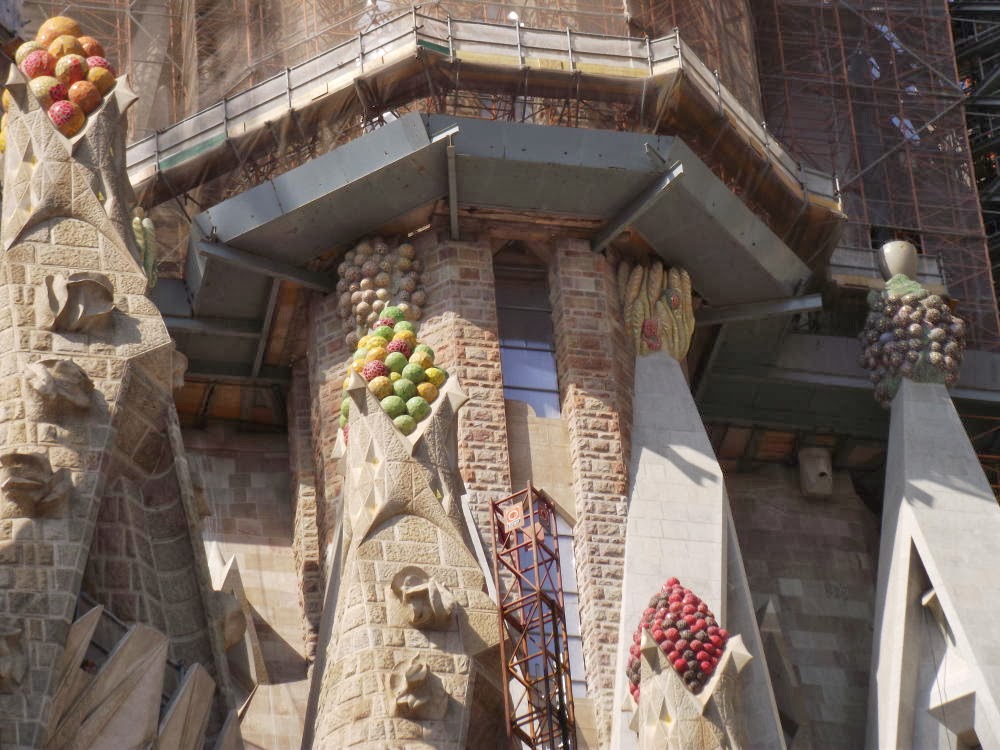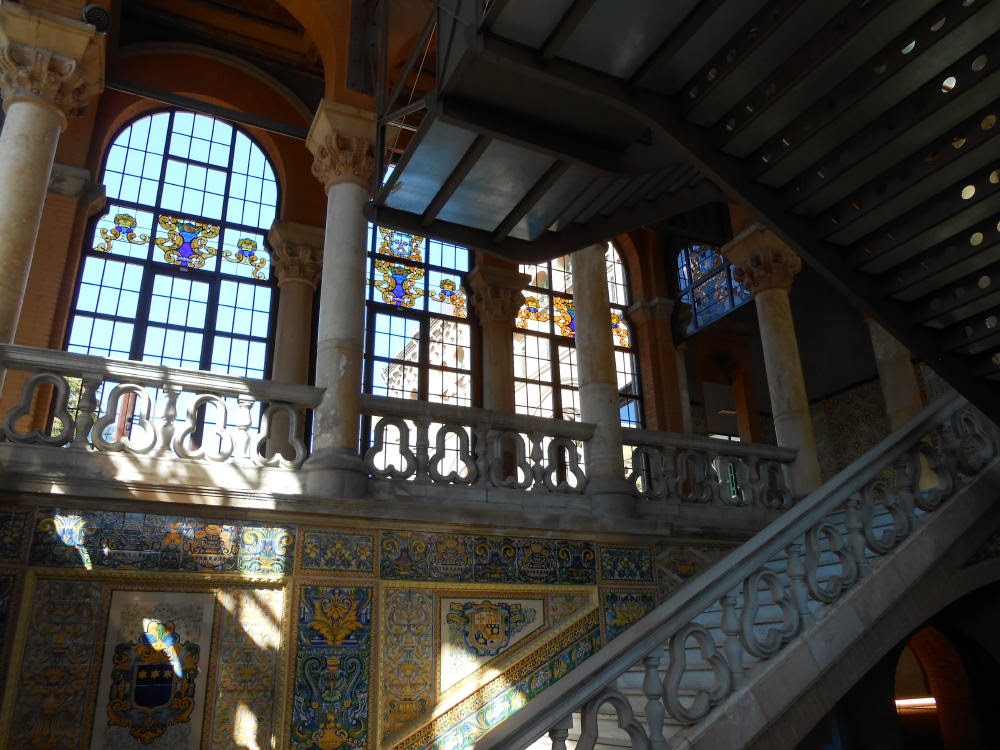Sept 26 - Barcelona's Architecture is Unsurpassed!
The
Basílica i Temple Expiatori de la Sagrada Família (also known as La Sagrada Familia) is a large Roman Catholic church in Barcelona, Spain, designed by Catalan architect Antoni Gaudi
(1852–1926). Although incomplete, the church is an UNESCO World Heritage Site.
 |
The beautiful La Sagrada Familia without all the scaffolds and construction.
|
|
It was kind of like the Eiffel Tower in Paris - LOTS of tourists taking photos from every angle. We fit right in with that aspect.
Gaudí devoted his last years to the project, and at the time of his
death at age 73 in 1926 less than a quarter of the project was complete.
Sagrada Família's construction progressed slowly, as it relied on private donations and was interrupted by the Spanish Civil War,
only to resume intermittent progress in the 1950s. Construction passed
the midpoint in 2010 with some of the project's greatest challenges
remaining
and an anticipated completion date of 2026, the centenary of Gaudí's death. More donations have come in for the project since the Barcelona Olympic Games were there.
 |
| 2026 is the GOAL for completion -100 years after Gaudi began construction. |
 |
| "The most extraordinary personal interpretation of Gothic architecture since the Middle Ages." |
Gaudí's original design calls for a total of eighteen spires, representing in ascending order of height the Twelve Apostles, the four Evangelists, the Virgin Mary, and tallest of all, Jesus Christ. Eight spires have been built as of
2010, corresponding to four apostles at the Nativity façade and four
apostles at the Passion façade.

Computer-aided design technology has been used to accelerate construction of the building,
which had previously been expected to last for several hundred years,
based on building techniques available in the early 20th century.
Current technology allows stone to be shaped off-site by a CNC milling
machine, whereas in the 20th century, the stone was carved by hand.
The Church will have three grand façades: the Nativity
façade to the East, the Passion
façade to the West, and the Glory
façade to the South (yet to be completed). The Nativity Façade was
built before work was interrupted in 1935 and bears the most direct
Gaudí influence.

 |
| We didn't go inside, but here is a look at one of the ceilings...spectacular! |
 |
| A model of Gaudi's original plan |
GARDEN CITY FOR NURSING THE SICK -
Hospital de la Santa Creu i Sant Pau
 |
| The former Hospital de la Santa Creu i Sant Pau is a complex built between 1901 and 1930 |
We enjoyed just walking through the area and taking photos of the architecture. It's hard to believe that it's only 100 years old.

This is Europe’s foremost art-nouveau complex and an icon among
Barcelona’s dazzling array of landmarks which embodies the city’s
innovative spirit.
The man behind all this architecture was the Catalan art nouveau architect Lluís Domènech i Montaner. He thought it was essential to be able to give sick people a feeling of well-being
and beauty, which would most certainly contribute to an early
convalescence, as according to him beauty has therapeutic value.
I actually enjoyed going through this complex MORE than La Sagrada Familia, and there were hardly any tourists!
 |
| Beautiful tile mosaic work. |
The pavilions, set among gardens and connected by underground passages,
are breathtakingly beautiful and a showcase for the applied arts,
featuring sculptures, stained glass and mosaics.
 |
| The weather in late September was PERFECT! I wouldn't want to go in the heat of summer, however. |
 |
| We went inside one of the buildings that was open - so beautiful! |
 |
| Dumpster Diving is pretty common is some parts of the city. |
 |
| These are shopping carts mostly used by the older people - they can lock them up. |
 |
| Anybody have a clue what these are? |
 |
| It's interesting to go into the grocery stores to see what each area of the country has. |
 |
| YUM! Sardines and Musclos! |
 |
| Everyone lives in flats or apartments. |
In order to have a parking spot, one must buy it for around $20,000 euros or pay $150 a month rent a space. That's crazy!
 |
| Just a colorful thing in a park close to our host's flat. |
















































No comments:
Post a Comment